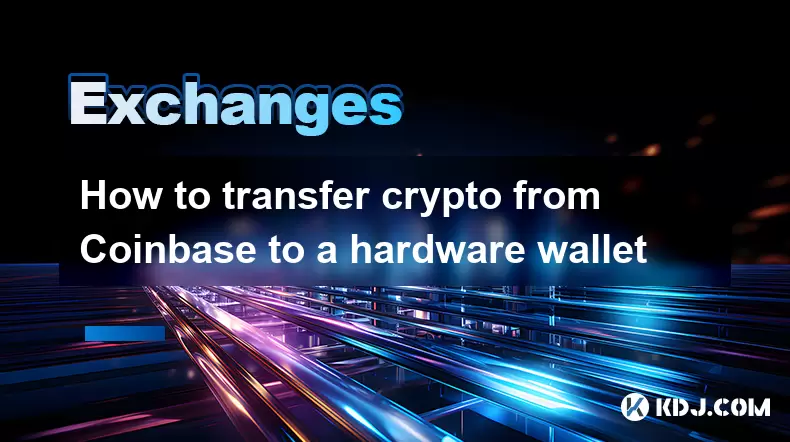-
 Bitcoin
Bitcoin $119000
-2.21% -
 Ethereum
Ethereum $4315
1.01% -
 XRP
XRP $3.151
-3.11% -
 Tether USDt
Tether USDt $0.0000
0.00% -
 BNB
BNB $808.5
-0.71% -
 Solana
Solana $175.8
-4.21% -
 USDC
USDC $0.9999
0.00% -
 Dogecoin
Dogecoin $0.2250
-3.92% -
 TRON
TRON $0.3469
1.77% -
 Cardano
Cardano $0.7818
-3.81% -
 Chainlink
Chainlink $21.47
-2.10% -
 Hyperliquid
Hyperliquid $43.30
-6.81% -
 Stellar
Stellar $0.4370
-2.84% -
 Sui
Sui $3.682
-4.40% -
 Bitcoin Cash
Bitcoin Cash $590.8
2.67% -
 Hedera
Hedera $0.2484
-5.20% -
 Ethena USDe
Ethena USDe $1.001
0.00% -
 Avalanche
Avalanche $23.10
-4.29% -
 Litecoin
Litecoin $119.2
-3.96% -
 Toncoin
Toncoin $3.409
0.90% -
 UNUS SED LEO
UNUS SED LEO $9.016
-1.29% -
 Shiba Inu
Shiba Inu $0.00001304
-3.82% -
 Uniswap
Uniswap $11.18
1.33% -
 Polkadot
Polkadot $3.913
-3.51% -
 Cronos
Cronos $0.1672
-3.08% -
 Dai
Dai $1.000
0.02% -
 Ethena
Ethena $0.7899
-4.70% -
 Bitget Token
Bitget Token $4.400
-1.23% -
 Pepe
Pepe $0.00001132
-5.93% -
 Monero
Monero $257.9
-6.44%
How to transfer crypto from Coinbase to a hardware wallet
Transfer your crypto from Coinbase to a hardware wallet like Ledger or Trezor for enhanced security—your private keys stay offline, protecting your assets from hacks and breaches.
Aug 12, 2025 at 09:08 am

Why Use a Hardware Wallet for Crypto Storage
Storing cryptocurrency on an exchange like Coinbase is convenient but comes with inherent risks. Exchanges are online platforms, making them susceptible to hacking, phishing, and internal breaches. By transferring your crypto to a hardware wallet, you gain full control over your private keys, which are stored offline in a secure environment. This method is known as cold storage and is widely regarded as one of the safest ways to protect digital assets. Hardware wallets like Ledger and Trezor use secure elements and PIN protection to prevent unauthorized access. When you initiate a transfer from Coinbase to your hardware wallet, you're moving your assets from a custodial wallet (managed by Coinbase) to a non-custodial wallet (fully under your control).
Preparing Your Hardware Wallet
Before initiating any transfer, ensure your hardware wallet is properly set up and secured. Begin by unboxing your device and connecting it to your computer via USB. Follow the manufacturer’s instructions to install the accompanying software—Ledger Live for Ledger devices or Trezor Suite for Trezor. During setup, you will be prompted to create a recovery phrase, typically consisting of 12, 18, or 24 words. Write this down on paper and store it in a secure, fireproof location. Never save it digitally or take screenshots. Confirm the recovery phrase on the device itself to ensure accuracy. After setup, verify that your hardware wallet supports the specific cryptocurrency you plan to transfer—for example, Bitcoin (BTC), Ethereum (ETH), or ERC-20 tokens. You can check compatibility on the manufacturer’s website or within the wallet interface.
Obtaining the Receiving Address from Your Hardware Wallet
To receive funds, your hardware wallet must generate a public address. This address is unique to your wallet and can be shared safely to receive crypto. Open the wallet software on your computer and navigate to the account or wallet section for the specific cryptocurrency you're transferring. For instance, in Ledger Live, select the BTC or ETH account, then click "Receive". The software will prompt you to confirm the action on your hardware device. Always verify the address displayed on the hardware wallet’s screen matches the one shown in the software. This prevents malware from altering the address during copy-paste. Once confirmed, the correct receiving address will appear in the software. Copy it carefully or scan the QR code if available. This address will be used as the destination when sending crypto from Coinbase.
Initiating the Transfer from Coinbase
Log in to your Coinbase account via the web platform (preferred over the mobile app for advanced transactions). Navigate to your Portfolio and select the cryptocurrency you wish to withdraw. Click "Send/Receive", then choose "Send". In the "Send to" field, paste the receiving address copied from your hardware wallet. Double-check every character to avoid sending funds to an incorrect address—crypto transactions are irreversible. Enter the amount you want to transfer. Consider sending a small test transaction first (e.g., $5 worth) to confirm everything works before transferring the full balance. Select the network carefully—ensure the network matches the asset type (e.g., use the Ethereum network for ETH or ERC-20 tokens). Approve the transaction using your two-factor authentication (2FA) method, such as Google Authenticator or SMS. After confirmation, Coinbase will process the withdrawal.
Verifying the Transaction on the Blockchain
Once the transfer is initiated, it will appear in your Coinbase transaction history with a status of "Pending" or "Processing". To monitor progress, use a blockchain explorer like blockchain.com for Bitcoin or Etherscan for Ethereum. Paste the transaction ID (TXID) from Coinbase into the search bar of the explorer. The TXID is a long string of characters unique to your transaction. You’ll see details such as sender address, recipient address, amount, and network fees. Confirm that the recipient address matches your hardware wallet’s address. Depending on network congestion, the transaction may take a few minutes to several hours to receive confirmations. Most wallets require at least one confirmation before showing the balance. In your hardware wallet software, refresh the account to see the incoming balance. If the funds don’t appear after several hours, verify the correct network was used and that the address was copied accurately.
Troubleshooting Common Transfer Issues
If your crypto doesn’t arrive in your hardware wallet, consider the following possibilities. First, ensure you used the correct blockchain network—sending ERC-20 tokens via the BSC network will result in loss of funds. Second, confirm that the receiving address belongs to the correct wallet and asset type. Some wallets generate different addresses for different coins, even within the same device. Third, check if the transaction is stuck due to low network fees. You can use tools like ETH Gas Tracker to estimate appropriate fees. If the transaction is confirmed on the blockchain but not visible in your wallet, try re-syncing or re-adding the account in your wallet software. For Ledger users, this may involve re-importing the account using the derivation path. Never share your recovery phrase with anyone, even for troubleshooting.
Frequently Asked Questions
Can I send any cryptocurrency from Coinbase to my hardware wallet?
Not all cryptocurrencies supported by Coinbase are compatible with every hardware wallet. Check your hardware wallet’s official asset list before initiating a transfer. For example, Cardano (ADA) is not natively supported on Ledger without using third-party apps.
What happens if I lose my hardware wallet?
As long as you have your recovery phrase, you can restore your funds on another compatible hardware wallet. The recovery phrase gives access to all private keys associated with your accounts. Never store the phrase digitally.
Why is my transaction taking so long to confirm?
Transaction speed depends on network congestion and the fee you paid. Higher fees prioritize your transaction. You can check the status using a blockchain explorer and consider using a fee accelerator if available.
Do I need to pay a fee to send crypto from Coinbase to my hardware wallet?
Yes, Coinbase charges a network transaction fee based on current blockchain congestion. This fee goes to miners or validators, not Coinbase. You can usually adjust the fee level during the send process, but lower fees may result in slower confirmation.
Disclaimer:info@kdj.com
The information provided is not trading advice. kdj.com does not assume any responsibility for any investments made based on the information provided in this article. Cryptocurrencies are highly volatile and it is highly recommended that you invest with caution after thorough research!
If you believe that the content used on this website infringes your copyright, please contact us immediately (info@kdj.com) and we will delete it promptly.
- Bitcoin, CPI, and Market Fears: Navigating the Crypto Landscape
- 2025-08-12 15:10:13
- BTC Traders Eye ETH Targets as CPI Looms: A New York Minute
- 2025-08-12 15:10:13
- Ethereum, Cold Wallets, and Presales: What's Hot Now?
- 2025-08-12 15:30:12
- Bitcoin, XRP, and Monetary Alternatives: Navigating the Crypto Landscape in 2025
- 2025-08-12 15:30:12
- XRP Breakout Watch: Institutional Volume Signals Potential Surge
- 2025-08-12 15:35:19
- XRP, Market Cap, and Institutional Adoption: A New Era for Crypto?
- 2025-08-12 15:35:19
Related knowledge

How to use margin trading on Poloniex
Aug 08,2025 at 09:50am
Understanding Margin Trading on Poloniex

How to read the order book on KuCoin
Aug 10,2025 at 03:21pm
Understanding the Order Book Interface on KuCoinWhen accessing the order book on KuCoin, users are presented with a real-time display of buy and sell ...

How to read the order book on KuCoin
Aug 12,2025 at 02:28am
Understanding the Basics of Staking in CryptocurrencyStaking is a fundamental concept in the world of blockchain and cryptocurrencies, particularly wi...

How to set price alerts on Kraken
Aug 11,2025 at 08:49pm
Understanding Price Alerts on KrakenPrice alerts on Kraken are tools that allow traders to monitor specific cryptocurrency pairs for price movements. ...

How to earn cashback rewards on Crypto.com
Aug 12,2025 at 02:08am
Understanding Cashback Rewards on Crypto.comCashback rewards on Crypto.com are a feature designed to incentivize users to spend using their Crypto.com...

How to use advanced trading on Gemini
Aug 08,2025 at 04:07am
Understanding Advanced Trading on GeminiAdvanced trading on Gemini refers to a suite of tools and order types designed for experienced traders who wan...

How to use margin trading on Poloniex
Aug 08,2025 at 09:50am
Understanding Margin Trading on Poloniex

How to read the order book on KuCoin
Aug 10,2025 at 03:21pm
Understanding the Order Book Interface on KuCoinWhen accessing the order book on KuCoin, users are presented with a real-time display of buy and sell ...

How to read the order book on KuCoin
Aug 12,2025 at 02:28am
Understanding the Basics of Staking in CryptocurrencyStaking is a fundamental concept in the world of blockchain and cryptocurrencies, particularly wi...

How to set price alerts on Kraken
Aug 11,2025 at 08:49pm
Understanding Price Alerts on KrakenPrice alerts on Kraken are tools that allow traders to monitor specific cryptocurrency pairs for price movements. ...

How to earn cashback rewards on Crypto.com
Aug 12,2025 at 02:08am
Understanding Cashback Rewards on Crypto.comCashback rewards on Crypto.com are a feature designed to incentivize users to spend using their Crypto.com...

How to use advanced trading on Gemini
Aug 08,2025 at 04:07am
Understanding Advanced Trading on GeminiAdvanced trading on Gemini refers to a suite of tools and order types designed for experienced traders who wan...
See all articles

























































































